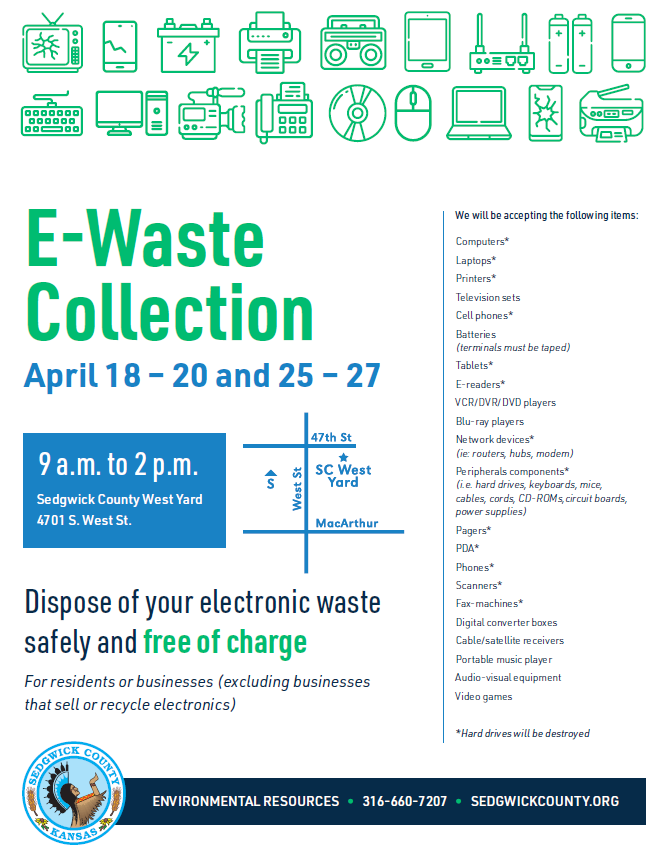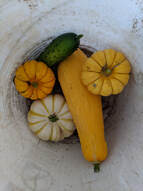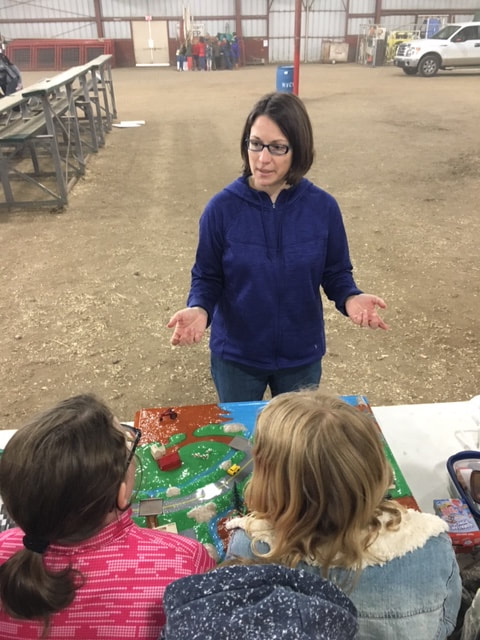|
These days, there is a lot of talk about soil health, cover crops, and regenerative ag. I was first introduced to cover crops my freshman year of college by a professor and have been intrigued with and passionate about it ever since. The more I have learned about it, the more I realize how much it just makes sense.
I started growing covers in 2019 and have been pleased with it ever since. A few of the results I have experienced already are lower inputs, increased yield, reduced soil and wind erosion, weed suppression, and high quality feed for cattle. I am amazed when I go out into a growing cash crop in the middle of the summer and everything is rock hard and dry in our conventional tilled field. I dig below the residue from the previous cover crop in the no-till/cover crop field, and it is instantly wet, black soil. In an area where we always want more rain, there has been a noticeable difference, and I have been able to make the best use of the rainfall we do get. No, it is not perfect and not everything you try will succeed, but overall, I have found cover crops to be extremely beneficial. If I can get the cash crop a few more days or weeks down the road and closer to the next rain, the better. I thoroughly enjoy checking on the covers, crops, and soil to learn what I can each time. I recently attended Soil Health U in Salina. This event has provided continuing education and growth learning from other producers. I attended a session titled "Water Use and Aquifer Recharge." This session stuck out to me due to the many conversations about water we have had locally within our county and also with the state legislators about water rights and the diminishing levels of the aquifer. This session featured a producer, Chris Grotegut, from the panhandle of Texas where irrigation is their lifeline. He talked about how they have monitored and witnessed their aquifer levels continually decreasing since the 1950s. In 2010, they started utilizing cover crops on their 10,000-11,000 acre row crop and ranch operation to manage their water. The last several years, they have seen rising levels of water in the water table where they monitor, which is unheard of in their area. Growing covers and increasing our soil health to be more efficient with irrigation water may have a role to play in the future. Learning more about farming and the Ag industry is something I love and will constantly be pursuing! Joseph Neville, "SOIL HEALTH & WATER", SCFB news, Sedgwick County Farm Bureau Agricultural Association, March 2023, https://www.scfbaa.org/news You may find the thought of drinking fertilizer quite alarming, but in reality, we may all be drinking a bit of fertilizer. When we add fertilizer to our yard or garden, the bag has 3 numbers on the front with dashes between them.
The first number is the percent nitrogen. Excess nitrogen leaches into the soil with water and converts from nitrite to nitrate as it travels downward. In my area of Wichita, about 20-30 feet down it enters our groundwater as nitrates. The second number is the percent phosphate or phosphorous. Phosphorous is a hazard to surface water since it encourages the growth of algae and more specifically blue green algae. Some strains of blue green algal blooms are toxic, and some are just foul smelling, but neither is desirable. Both are avoidable if we keep the nutrients on our yards where the grass is growing. The third number is the percent of K or potassium. Potassium does not create as many issues as nitrogen and phosphorous, but it does encourage the growth of algae along with the phosphorous. The point of writing about this is that none of us really wants to drink lawn fertilizer. For the most part we can avoid drinking lawn fertilizer if we apply small amounts at a time. Not applying right before we irrigate heavily, or a large rain is expected will lower the chance of it leaving our lawn and soaking into the soil or running off with water and entering a stream. The point of buying fertilizer is not to lose much of it to leaching or runoff but to stimulate the growth of plants in our yard or garden. Let’s get a better return on our investment and quit drinking our fertilizer! The author Howard Miller is the Outreach Coordinator for the Cheney Lake Watershed. To measure rainfall, we look at our rain gauge. A much better way is to look at the species of plants growing in our yard. Grass in a monoculture that has been mowed short on a regular basis and then irrigated does not infiltrate much of the water that falls on our yard. Short-rooted grasses are not conducive to infiltrating the water into the soil profile. If we get .5 inches on a lawn that looks well maintained, we may indeed infiltrate most of that depending on the soil moisture at the start of rain event. If we get 1 inch, we most likely will still only infiltrate .5 inches, the rest will runoff due to lack of root pores that go deep into the soil. If we allow multiple species such as clover, dandelions etc. grow we will have much more infiltration due to deeper root pores. Dandelions, aside from the telltale yellow flower and fuzzy seed head, are very beneficial to the health of the soil in our yard due to their deep tap root. Honeybees depend on dandelion blooms for their early season nectar supply. Bees love my yard because I supply them dandelions and clover from which they can collect nectar. The soil likes my yard too since I feed the soil microbes with multiple species with varying root depths. How much rain does our yard get? In reality much of that is up to us and how we maintain the plant species in our yard.
The author, Howard Miller, is the Outreach Coordinator for the Cheney Lake Watershed, Inc. Note: The author, Howard Miller, is the Outreach Coordinator for the Cheney Lake Watershed
It’s that time of year when the trees shed their leaves and drop them in copious amounts on the ground. I see my neighbors rake their leaves and haul them off in the trash or have their lawncare folks do that for them. Me I don’t rake any leaves nor haul any off. I simply chop them with my mower and add the minerals back into the soil through decomposition. Something to think about is that trees mine minerals out of soil deep down and deposit 50-80% of them in their leaves. Minerals like potassium, phosphorus, magnesium & calcium. My question is why do we pay folks to fertilize our yards and then pay those same folks to haul the leaves off? Last fall I had an area that had leaves about 3 inches deep in the corner of my yard. My neighbor mused that I would have to haul some of those off, but I didn’t. I chopped them up with my mower and later he asked me where I put them. I told him to look down they were still there. This summer that same neighbor asked me why one area of my yard did better than the rest…I asked him if he remembered where my pile of leaves was last year. After the lightbulb came on in his head, he began to realize I wasn’t completely crazy and that it was the leaves that helped my grass grow. My advice is to chop your leaves and use the minerals the trees are offering you free of charge. Leave your leaves and leave more of your hard-earned money in the bank. Note: The author, Howard Miller, is the Outreach Coordinator for the Cheney Lake Watershed.
Does regenerative agriculture have a positive impact on our drinking water in Wichita? To understand the answer to that question we need to understand the difference between runoff and infiltration. Runoff of rainwater from soil occurs when we have poor soil structure on the surface and or in the substructure. Many of us are accustomed to seeing tilled soil that is being prepared for planting. Traditional thought is that tillage allows the water to infiltrate into the soil, in reality it does not. While this is written about soils in agricultural fields, the same principles apply on our lawns or gardens. Tillage destroys the surface soil structure and when rain falls on it the soil particles consolidate, and the water mostly runs off carrying with it soil particles. Soil that is not tilled and has pore spaces in it created by roots, earthworms and other soil organisms will allow the water to infiltrate and store it in the root zone to grow plants. In the Cheney Lake Watershed area above Cheney Lake many farmers are adopting the regenerative agriculture soil practices that allow the water to infiltrate which is a huge benefit to our water supply in Wichita. You may wonder how water gets into the stream and then to the lake if it infiltrates. Here’s how that works the water infiltrates and then finds it way out of the soils through the shallow aquifer attached to the stream system. That water becomes what we call baseflow or low flow which is a much cleaner supply of water and it is delivered over time which gives us less floods but more water. That may seem contradictory until we realize that runoff creates flash floods loaded with soil particles that overwhelm Cheney Lake and the water is released downstream to protect the integrity of the dam. That flood water released downstream never makes it into the Wichita water supply. Farmers aren’t doing it alone, they are supported with programs through USDA, KDHE, the City of Wichita and companies like General Mills that help them understand the best way to bring regenerative agriculture to their farms. Groups like the Cheney Lake Watershed help to coordinate those efforts for the farmers. With less tillage and more infiltration farmers in the Cheney Lake Watershed are doing their part to provide the citizens of Wichita a cleaner, safer water supply. Next time you take a sip of water from the faucet in Wichita stop and realize that sip of water likely started as rainwater on a farm field in the Cheney Lake Watershed and thank the farmers for their efforts to improve it. Each year, the Sedgwick County Conservation District administers cost-share funds provided by the Kansas Department of Agriculture through appropriation from the Kansas Water Plan Fund. Funding helps landowners in this county implement conservation practices that benefit all of us by providing cleaner water, more productive crop and grazing lands, and improved wildlife habitat.
Beginning July 1, 2021, the Sedgwick County Conservation District received allocations for two programs: $20,800.00 for the Water Resources Cost-Share Program (WR) and $9,924.00 for the Non-Point Source Pollution Control Program (NPS). All funding received through these programs goes directly to area landowners. None of this funding is used for Conservation District administrative expenses. Since July, $11,547.89 in WR funding has been placed under contract with area landowners. This leaves $9,252.11 available for additional projects. Conservation practices implemented under this program include gradient terraces, grassed waterways, and grade stabilization structures. $6,534.94 in NPS funding is under contract, leaving $3,389.06 for additional applications. NPS funding helps landowners replace failing septic systems and plug abandoned wells. These projects protect groundwater quality. Please contact the Conservation District to apply for cost-share funding from the WR or NPS programs. Any cost-share money not under contract by November 30, 2021 will be cancelled. These are “use it or lose it” programs! guest post by Howard Miller, Outreach Coordinator, Cheney Lake Watershed, Inc.
How green is our yard really, not on the color spectrum but on the ecological spectrum? Often, we picture a nice yard as having a mono-culture grass like fescue with some ornamental bushes or flower plants. I like to challenge you to think of a “ecologically green” yard, a yard with a diversity of plants growing in symbiotic harmony an interdependent yard you might say. I live in northwest Wichita and my yard is not what you would call “normal”. In my yard we encourage species diversity like fescue grass, crabgrass, clover, plantain, and dandelions. Yes, I used the “D” word. If you look at a native prairie, the species diversity in my yard in a small way mimics the native prairie system. Grass as a monoculture crop requires a great deal of inputs to maintain and is not healthy for the microbes living in the soil. Dandelions, considered by many a weed, are a deep-rooted plant that mine nutrients deep down in the soil and bring them to the surface. After the life cycle of the dandelion plant is complete those nutrients are left for other plants to use. Clover seems rather invasive, but it is a legume. Legumes pull nitrogen out of the air and sequester it into the soil for other plants to use. Clover does tend to grow in patches primarily because it grows on poor soils and can thrive where other plants struggle. I don’t fertilize my yard, I don’t use herbicides, weed killers, and I hardly ever water. I also don’t rake leaves; I mulch them with my mower and allow the nutrients in the leaves to grow the plants the following year. Also, the organic content in the leaves adds organic matter that holds moisture in my soil, and it make the soil more porous to absorb the rainfall and store it in the soil not in the neighborhood drainage canal. The more we mimic nature, the more we lower our maintenance costs for our yard. Is the soil in your yard alive and full of biological activity? Mine is! Do you want to feed people and build your community?
Do you have an acre of irrigated land in Sedgwick County? The Sedgwick County Conservation District would like to explore partnering with you to provide the funds, technical advice and labor coordination to make it happen for your community. Please call Brenda @ 316-721-6127 ext. 7970 |
Proudly powered by Weebly



